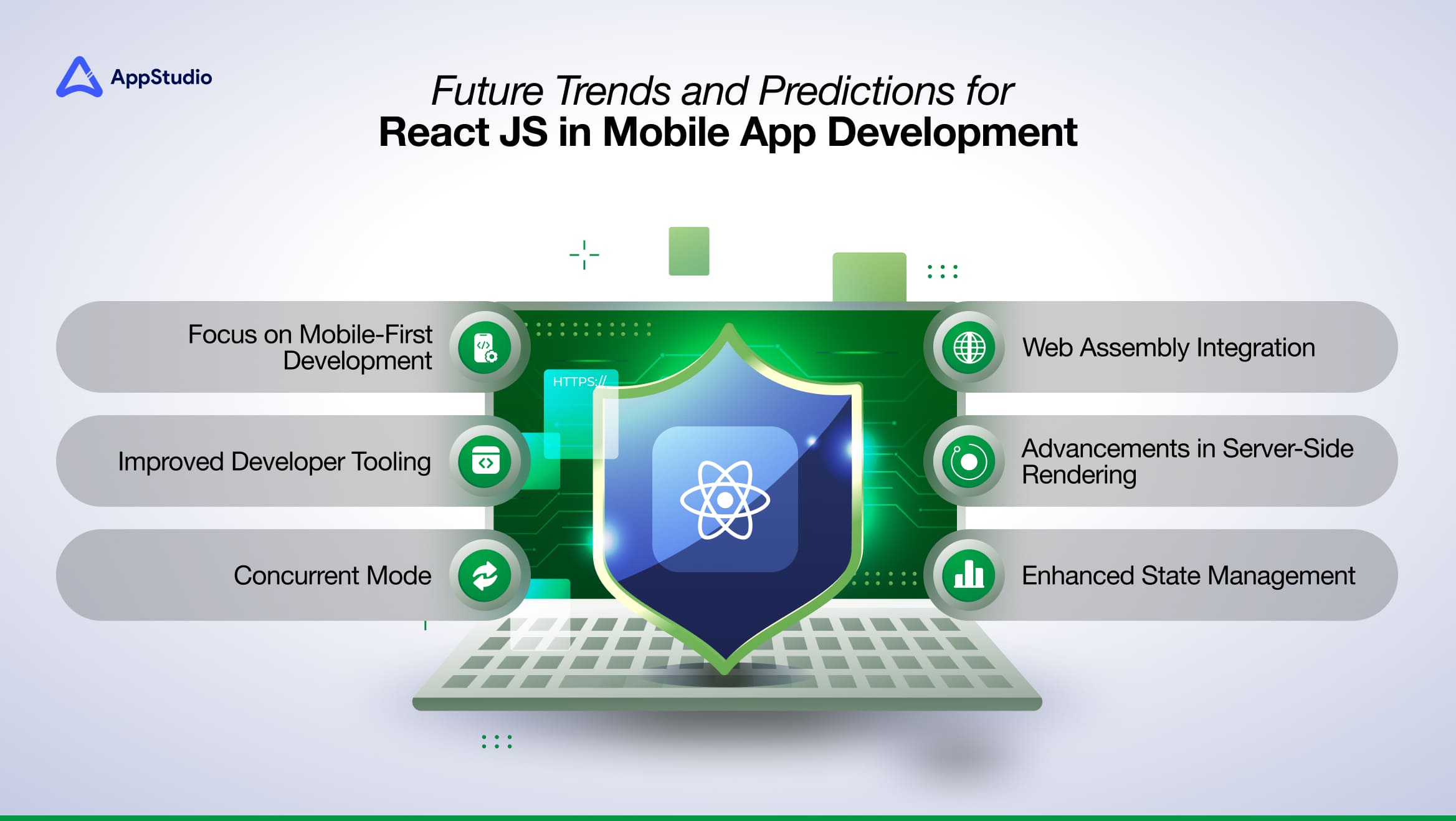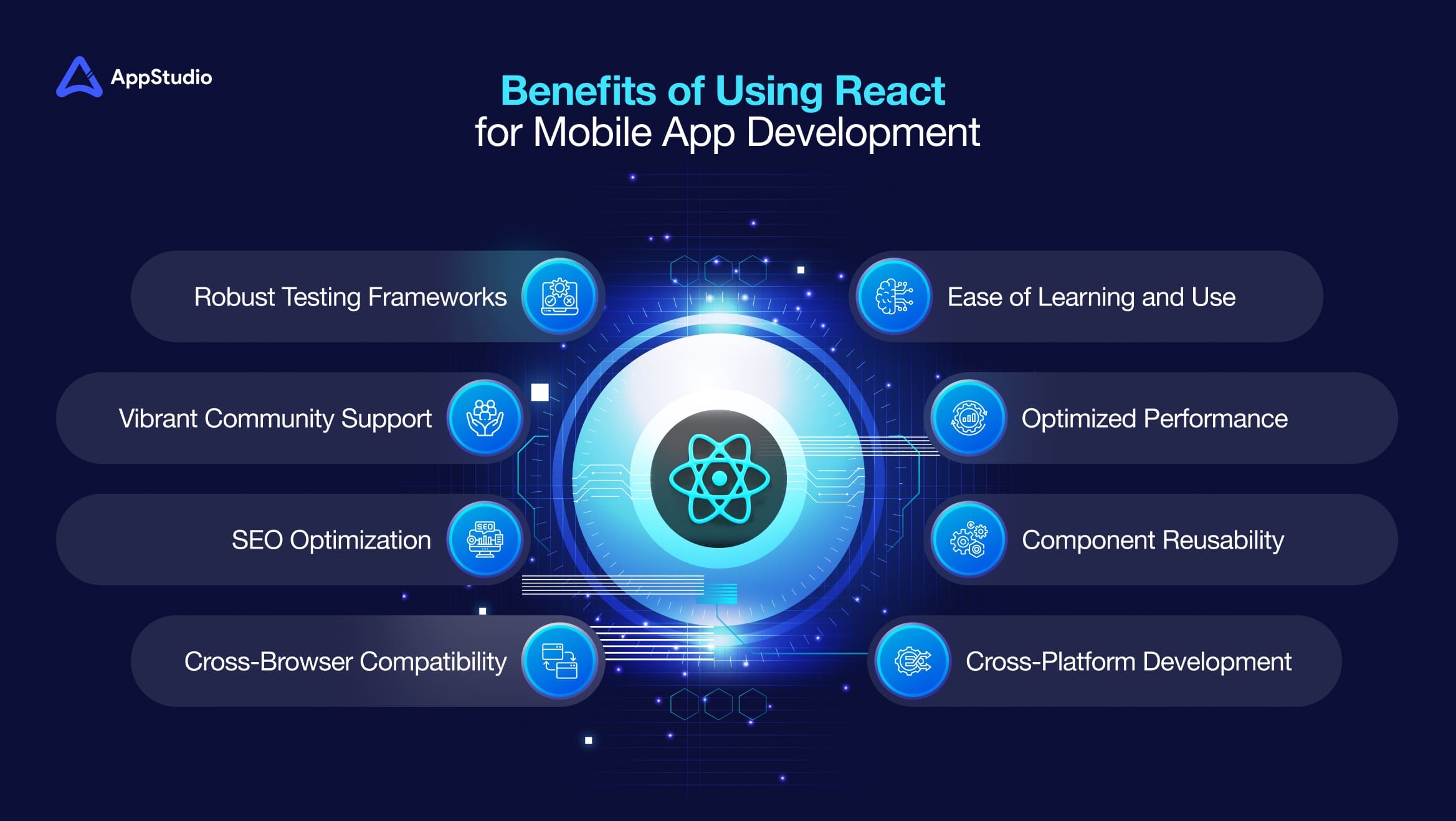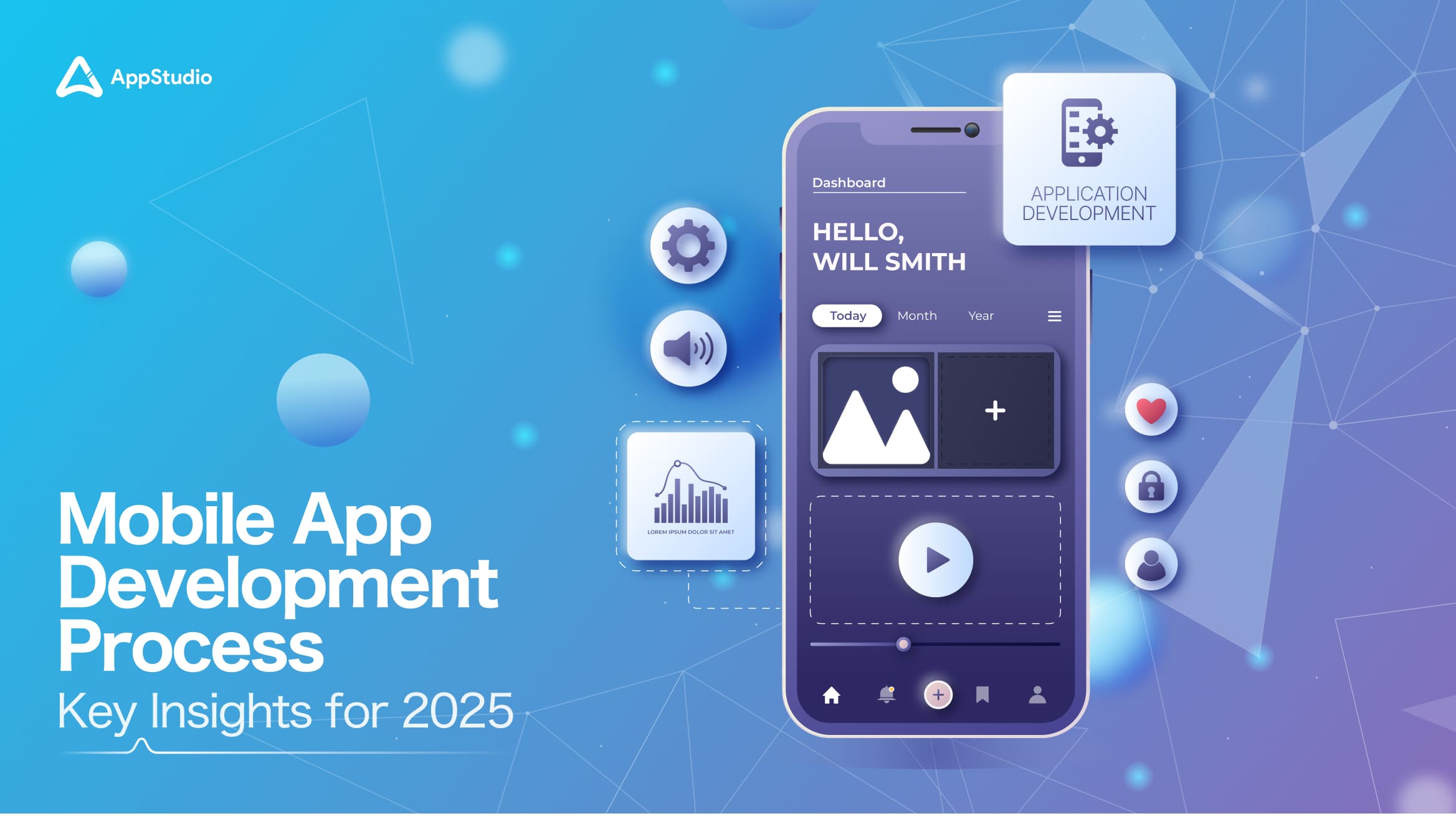Demand for software tailored to portable devices continues to climb across various industries. To meet this growing need, developers require robust tools that expedite the development cycle while maintaining high-quality mobile solutions. Among the array of tools available, React emerges as a pivotal technology for modern mobile app development using React JS.
React JS has solidified its role as a key player in the developer’s toolkit, renowned for crafting dynamic and interactive user interfaces. Its popularity is attributed to its ability to streamline the mobile app development using React JS process, providing flexibility and efficiency. What distinguishes React JS is its user-centric approach, which simplifies application building without the need to learn multiple programming languages.
For developers eager to dive into mobile app development using React JS, React Native offers a fluid experience. This framework enables developers to create native-like apps using JavaScript, allowing the same codebase to be utilized across Android and iOS platforms. This cross-platform compatibility guarantees that apps deliver smooth and consistent performance on all devices, a major benefit over traditional native development approaches.
The impact of React in the mobile development arena is well-documented. According to data from builtwith, over 630,000 websites in Canada alone employ React for their front-end development, highlighting its broad adoption and dependability. This statistic underscores the effectiveness of React for React JS mobile application projects.
In this blog post, we explore why React JS is an optimal choice for mobile app development using React JS, examining its fundamental features and the unique advantages it offers.
By leveraging the capabilities of React JS, developers can achieve remarkable results in mobile app development, making it a top choice for those looking to create high-performance, scalable, and robust mobile applications.
Related reading: Top Programming Languages for Mobile App Development
React Native: A Key Tool for Mobile App Development Using React JS
In 2013, Meta launched ReactJS, a powerful library designed to enhance the development of dynamic user interfaces for its extensive web applications. With its emphasis on flexibility and efficiency, ReactJS has garnered support from a strong community and serves as the core technology behind the user interfaces of widely used applications such as WhatsApp and Instagram.
Expanding its technology suite in 2015, Meta introduced React Native. This open-source framework is specifically engineered for mobile app development using React JS, enabling developers to create mobile apps with ReactJS for Android and iOS platforms using a single codebase.
Since its inception, React has become a top choice for web and mobile app development using React JS globally. Currently, it is employed in over 1.2 million websites worldwide, demonstrating its broad adoption and versatility within the developer community.
Understanding the difference between a “framework” and a “library” is crucial for app developers entering the field of mobile app development using React JS. A framework, such as React Native, provides a comprehensive set of tools necessary for large-scale application development, including functionalities for development, testing, and network operations. In contrast, a library like ReactJS focuses on specific functionalities, which are perfect for crafting vibrant user interfaces but typically require additional tools to develop complete applications.
Key Features of ReactJS for Mobile App Development:
- Components: Components are the foundational elements of any React application, similar to JavaScript functions but operating independently with their own logic and controls. This modular architecture enhances the ability to create mobile apps with ReactJS.
- JSX (JavaScript XML): JSX is a syntax extension that merges the simplicity of templating languages with the power of JavaScript, improving the UI development process and helping developers visualize the application design more easily.
- One-way Data Binding: This feature ensures that changes in the data model are reflected in the UI without creating a two-way data dependency, thus enhancing stability and performance.
- Virtual DOM: ReactJS employs a virtual DOM that updates the browser’s DOM efficiently by changing only parts of the UI that have changed rather than reloading the entire UI. This leads to faster performance and less memory consumption.
ReactJS’s capabilities make it an ideal choice for developers looking to create mobile apps with ReactJS or use ReactJS for mobile app development. These features ensure that applications are not only high performing but also maintainable and scalable across various platforms.
Related reading: Mobile App Development Cost
Future Trends and Predictions for React JS in Mobile App Development

React JS continues to evolve, shaping the future of creating mobile apps with React JS and web development. Here are some of the key trends and developments anticipated for React JS, particularly in the context of creating mobile apps with React JS:
1. WebAssembly Integration
It is set to enhance React JS’s capabilities by allowing it to perform near-native computations in the browser. This development will significantly boost the performance when you create a mobile app with React JS, enabling smoother integration with languages like Rust and C++.
2. Advancements in Server-Side Rendering (SSR)
These are crucial for improving the SEO and initial load performance of web applications created with React JS. Tools like Next.js and Gatsby already support SSR, and its adoption is expected to grow as it provides faster load times and an improved user experience in projects where you create mobile apps with React JS.
3. Enhanced State Management
It is pivotal for mobile app development in React JS, synchronizing data between the application’s model and view layers. React JS offers various state management solutions like Hooks and Redux, with upcoming tools like Recoil poised to further simplify state management in React applications.
4. Concurrent Mode
This new feature allows React JS to process multiple components simultaneously, enhancing the responsiveness and efficiency of applications. Especially crucial when you create a mobile app with React JS, Concurrent Mode supports advanced patterns like suspense and transitions, and is slated to become standard in future React JS versions.
5. Improved Developer Tooling
React JS is known for its superior developer tooling, which is expected to get even better. New tools and features, such as React Fast Refresh and React Profiler, will aid developers in optimizing performance and streamlining the development process as they create mobile apps with React JS.
6. Focus on Mobile-First Development
As mobile usage continues to dominate, React JS for mobile app development is more relevant than ever. React Native, which allows developers to create mobile apps with React JS, is anticipated to integrate more deeply with native platforms like SwiftUI and Jetpack Compose, enhancing cross-platform capabilities.
7. Expected Feature Advancements
- React Fire: This update aims to modernize React’s event system, aligning it more closely with web standards and improving its handling of events like touch and pointer interactions.
- React Flare: Focused on improving user interaction handling within React, this project will support the more seamless use of Concurrent Mode and server components.
- React Fabric: A re-architecture of React Native’s core to enhance its modularity and performance, making it easier to create a mobile app with React JS that performs well on all platforms.
- React Fusion: This initiative aims to merge the developer experiences of React and React Native, facilitating code sharing across desktop and mobile and improving platform compatibility.
These advancements set the stage for React JS to continue its dominance in mobile and web application development. For developers looking to create mobile apps with React JS or harness React JS for mobile app development, these trends signify exciting opportunities for innovation and efficiency.
Related reading: Complete Guide to Application Development Life Cycle
Building Cross-Platform Mobile Apps with React Native
Creating mobile applications using React.js involves leveraging React Native. The initial step in this process requires setting up your development environment, which includes installing Node.js and npm, followed by the React Native Command Line Interface (CLI). With these tools installed, you can use the CLI to start a new React Native project, establishing your app’s essential framework and dependencies.
The structure of your new project will generally include directories for platform-specific code (android/ and ios/), a src/ folder for your React Native code, and various configuration files. Within the src/ folder, you can organize your application into components and screens, promoting reusable UI elements that bolster modularity and maintainability—key aspects of mobile app development using ReactJS.
React Navigation provides a smooth method for managing routing between different screens in your application. Depending on the complexity of your app, state management can be conducted using React’s Context API or more extensive tools like Redux, which are ideal for ReactJS for mobile apps.
Testing is a vital stage in the development process. React Native seamlessly integrates with testing tools like Jest for unit tests and Detox for end-to-end testing, ensuring your application’s reliability and efficient performance. This integration is crucial for maintaining the quality expected in ReactJS for mobile apps.
When it’s time to launch your app, the deployment process will differ based on the target platform. For iOS applications, you should use Xcode to archive and distribute your app, whereas for Android app development, you can create a signed APK using Android Studio or similar command-line tools. Leveraging the broad ecosystem and supportive community around React Native can greatly enhance your development workflow and lead to successful project outcomes.
Benefits of Using React for Mobile App Development

Developers globally are increasingly adopting React and React Native, drawn by the significant advantages these platforms offer for mobile app development using ReactJS. Here’s an in-depth exploration of the key benefits that position React as the go-to choice.
Ease of Learning and Use
React’s learning curve is considerably smoother compared to other frameworks like Angular or Vue, making it highly accessible to developers with even a basic understanding of JavaScript. This ease is supported by React’s detailed documentation, extensive tutorials, and abundant training resources.
The use of JSX syntax, which integrates XML/HTML-like text with React code, simplifies the development process significantly. React’s component-based structure allows for code reusability across projects, boosting efficiency and reducing development time for ReactJS for mobile apps.
Optimized Performance
Performance is pivotal in mobile app development using ReactJS, and React excels with its virtual DOM. Developers create a virtual HTML structure, enabling efficient rendering processes:
- Changes in the UI initially occur in a virtual environment, meaning virtual components are generated without decelerating the application.
- Updates to the real DOM are confined to essential elements, which prevents a complete overhaul and accelerates the rendering process. This performance is further enhanced by JSX, which includes code shortcuts that contribute to quicker application performance—a technique also applied in React Native for React JS mobile applications.
Component Reusability
A major strength of React is the reusability of components, saving significant time in developing complex applications. This feature also simplifies maintenance and updates, as components can be individually adjusted or enhanced without impacting the entire application.
Cross-Platform Development
React Native facilitates the development of cross-platform solutions for both iOS and Android, ensuring consistent functionality and appearance across devices. The same code base is often used for both web and React JS mobile applications, providing a substantial advantage for businesses aiming to deploy multi-platform solutions within constrained budgets and schedules.
Cross-Browser Compatibility
React is especially effective for creating web applications that prioritize mobile responsiveness, ensuring seamless performance across various browsers. This adaptability is crucial for applications that focus on mobile usage but also require desktop accessibility.
Related reading: Top Mobile App Development Tools
SEO Optimization
Unlike many JavaScript frameworks, React stands out with its server-side rendering capabilities. React significantly reduces page load times by processing JavaScript code server-side and rendering it as a static webpage. This enhances the user experience and improves the applications’ visibility to search engines, boosting the potential for organic traffic.
Vibrant Community Support
The robust community surrounding React is a substantial asset; both React and React Native benefit from an enthusiastic, active open-source community. This global network extensively contributes to and continuously enhances technology. Access to a plethora of tutorials and blog posts by seasoned developers helps flatten the learning curve and supports ongoing education in ReactJS for mobile app development practices.
Robust Testing Frameworks
React’s widespread adoption is supported by its comprehensive testing capabilities. Developers can utilize tools like Jest, a lightweight JavaScript testing framework, and Enzyme, designed for testing React components. These tools are instrumental in swiftly identifying and addressing issues, ensuring the robustness and reliability of the final product in ReactJS for mobile apps.
Why Choose AppStudio? The Strategic Benefits of Our ReactJS Development Expertise

Partnering with a ReactJS development company like AppStudio offers crucial strategic benefits for businesses aiming to build robust, scalable, high-performance web applications. Here are compelling reasons to choose specialized ReactJS development services for your mobile app development using ReactJS:
ReactJS Development Expertise and Excellence
- Profound ReactJS Expertise: Our teams of seasoned professionals possess deep proficiency in ReactJS, ensuring your projects are executed flawlessly.
- Commitment to Quality: We adhere to industry best practices to produce maintainable, high-caliber code ideal for creating mobile apps with ReactJS.
- Wide-Ranging Experience: AppStudio brings a diverse portfolio, offering valuable perspectives and innovative solutions across multiple sectors, enhancing ReactJS for mobile app development.
Core Business Optimization
- Strategic Resource Management: By outsourcing your ReactJS development to us, you can focus on core business functions, such as strategic planning and customer engagement, without the overhead of managing an in-house development team.
Economic Efficiency
- Flexible Financial Plans: We offer various pricing strategies—including fixed, hourly, or retainer models—to align with your budget and project requirements for ReactJS mobile applications.
- Cost Reduction: Choosing our outsourced services often proves more cost-effective than maintaining an in-house team, especially for specialized or limited-duration projects.
Technological Advancement
- Cutting-Edge Technology: We stay at the forefront of technology, ensuring your projects benefit from the latest advancements in ReactJS for mobile apps.
- Advanced Development Techniques: We deliver efficient and robust applications by employing modern libraries and frameworks.
Assured Quality and Support
- Rigorous Quality Testing: Our specialist QA teams perform exhaustive testing to ensure your application is free from defects and performs seamlessly across various platforms.
- Continual Support and Updates: Our post-launch maintenance services guarantee that your application remains current and functional, optimizing ReactJS for mobile app development.
Scalable and Adaptable Solutions
- Flexible Team Composition: Our development teams can be dynamically scaled to meet project demands, providing versatility in resource management.
- Agile Project Adaptation: We are adept at adjusting to changes in project scope or shifts in timelines, ensuring consistent project progression.
Enhanced Time Management
- Accelerated Development Process: With expert knowledge and refined processes, we significantly shorten the development timeline, facilitating a faster launch for your ReactJS mobile application.
- Reliable Deadline Fulfillment: Our commitment to meeting strict deadlines ensures the timely delivery of your projects without sacrificing quality.
Related reading: Easy Steps to Create an App
ReactJS’s component-based architecture, robust community support, efficient development tools, and cross-platform capabilities with React Native make it an ideal choice for developers looking to create high-performance, scalable, and maintainable mobile applications. These attributes align with modern user expectations, marking ReactJS as a forward-looking technology in mobile app development.
Frequently Asked Questions
ReactJS is a JavaScript library Meta (formerly Facebook) developed to build user interfaces, primarily for web applications. It allows developers to create reusable UI components, which makes the development process more efficient and the code easier to maintain.
While ReactJS is focused on building web applications, React Native is used to develop native mobile apps for platforms like iOS and Android. It utilizes the same design principles as ReactJS but enables developers to create apps with native platform capabilities using JavaScript and React.
Yes, one of the key strengths of React Native is its ability to allow developers to write code once and deploy it on both iOS and Android platforms. This cross-platform capability helps save development time and reduces the cost of maintaining separate code bases for each platform.
ReactJS offers several key benefits for mobile app development, including: Component-Based Architecture, Virtual DOM, Strong Community Support, and Declarative UI.
React Native bridges the gap between JavaScript and the native platform’s components, allowing apps to run with near-native performance. It also uses a virtual DOM to minimize costly DOM manipulations and optimizes performance through techniques like code splitting and lazy loading.
Both React and React Native boast large, active communities with a wealth of resources available for developers. This includes extensive documentation, tutorials, third-party libraries, and forums. Additionally, many online courses and developer tools are available to help ease the learning process and support development projects.







